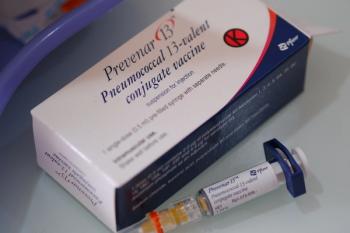
Assessing Biologic Medications for Effective Management of Severe Asthma in Adults
The use of biomarker profiles to guide asthma treatment decisions have not been well-studied.
To address optimal management with biologic medications in patients with severe asthma, an international team of experts noted treatment recommendations in review and feature published in The Journal of Allergy and Clinical Immunology.1
Although effective medications to control asthma are available, continued severe exacerbations still play a major role in health risks and outcomes, especially in patients with severe asthma. In this expert opinion, researchers highlighted studies of biomarker levels, clinical features, and safety considerations that might not be currently addressed in clinical guidelines.
Determining a patient’s specific asthma-related phenotypes is important for successful treatments, improved quality of life, reductions in exacerbations, and fewer hospitalizations. Across several asthma phenotypes, both with and without allergic features, eosinophile granulocytes play a major role in mediating airway inflammation. Because increased blood eosinophil counts are associated with worse disease outcomes, increased frequency of exacerbations, and asthma-associated mortality, many biological agents for severe asthma aim to reduce airway inflammation due to eosinophilia.
Asthma with type 2 (T2) cytokines make up nearly 70% of severe asthma cases, according to the International Severe Asthma Registry, and often presents with interleukin IL-4, IL-5, and IL-13 pathophysiology, which leads to eosinophilic and allergic disease. In clinical practice, the presence of specific T2 endotypes is assessed by the presence of these interleukins, immunoglobulin E (IgE), blood eosinophil count, and fraction of exhaled nitric oxide (FeNO).
“Biologic therapies may have a greater positive clinical impact in particular patient subgroups in asthma, 15 including those with higher FeNO levels and BECs, atopic dermatitis, chronic rhinosinusitis with nasal polyposis, allergies, and [oral corticosteroid (OCS)] use,” the authors noted.
Five biologics (monoclonal antibodies) have been approved by the FDA to treat severe T2 asthma, each with varying mechanisms of action and clinical indication: omalizumab, dupilumab, mepolizumab, reslizumab, and benralizumab.
When screening patients who plan to be treated with monoclonal antibodies, the authors noted that current treatment recommendations include a 4-part baseline assessment.
Part 1: Clinicians should first confirm the presence of severe asthma, as per the Global Initiative for Asthma report, as well as with OCS dependence, or 2 or more exacerbations per year and T2 inflammation, and/or clinically allergen-driven asthma. Adherence to medications, inhaler technique, and comorbidities should also be noted.
Part 2: Following a diagnosis of severe asthma and treatment optimization, clinicians should establish patient blood eosinophil count and FeNO levels. Ideally, these should be measured in patients who have not taken OCSs acutely within the past 2 weeks. As T2 asthma diagnosis in OCS-dependent patients can be challenging, the authors suggested repeating measures of blood eosinophil count and FeNO levels up to 3 times before assuming a non-T2 diagnosis.
Part 3: Review historic values and perform repeated measures to validate T2 biomarker levels and to confirm the presence of T2 asthma and comorbidities associated with severe asthma. The authors suggest considering an OCS-tapering approach in patients who take daily or frequent doses if historic eosinophil counts are unavailable.
Part 4: Consider biomarkers and comorbid disease entities correlated with severe asthma, addressing the highest clinical need of the patient.
After the 4-part baseline assessment, the authors noted that biologic treatment should be determined based on the predictors of response with key factors being blood eosinophil count, FeNO levels, and OCS use.
Thresholds for treatment recommendations based on blood eosinophil levels were categorized into levels <150 cells/mL, ³150 cells/mL to £150 cells/mL, and >1500 cells/mL; however the authors noted that these are not absolute thresholds and that OCS use is also very important in selecting an appropriate biologic.
Real-world differences in treatment response were noted between anti-IL5Ra and anti-IL5, and body mass index has also been used to determine treatment recommendations; however, limitations in available clinical findings have not provided enough data to support these associations.
“Although a favorable long-term response is commonly seen with [monoclonal antibodies] for patients with severe asthma, some patients show partial or no response, causing physicians to switch between biologic medications,” the authors wrote.
“With the lack of head-to-head comparisons of biologic medications in patients with severe asthma, additional data are needed to confirm these treatment recommendations,” they concluded.
Reference
1. Buhl R, Bel E, Bourdin A, et al. Effective management of severe asthma with biologic medications in adult patients: a literature review and international expert opinion. J Allergy Clin Immunol Pract. 2022;10(2):422-432. doi:10.1016/j.jaip.2021.10.059
Newsletter
Pharmacy practice is always changing. Stay ahead of the curve with the Drug Topics newsletter and get the latest drug information, industry trends, and patient care tips.


















































































































